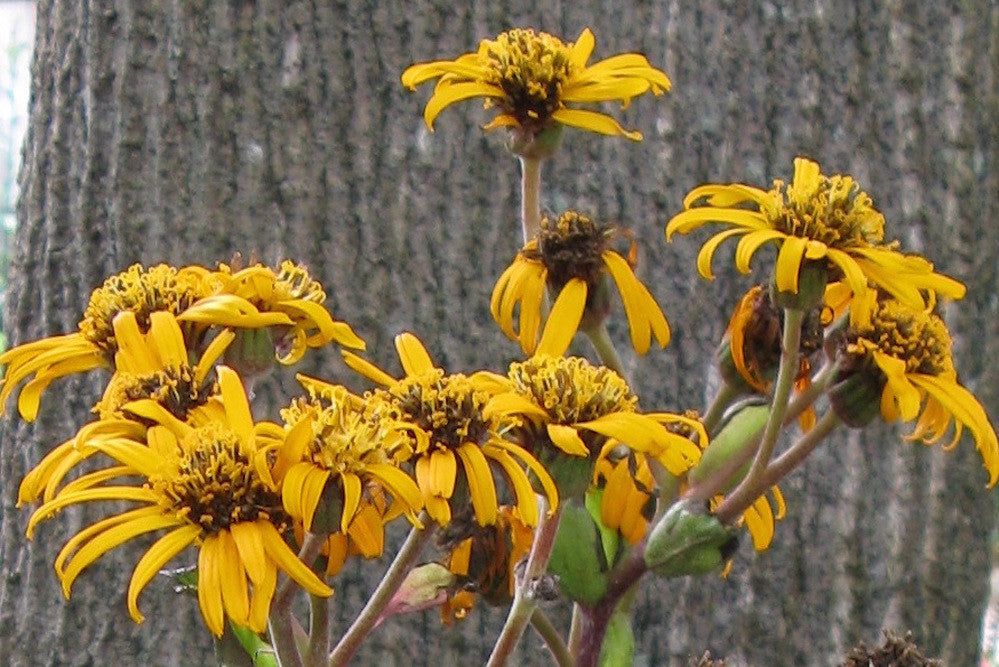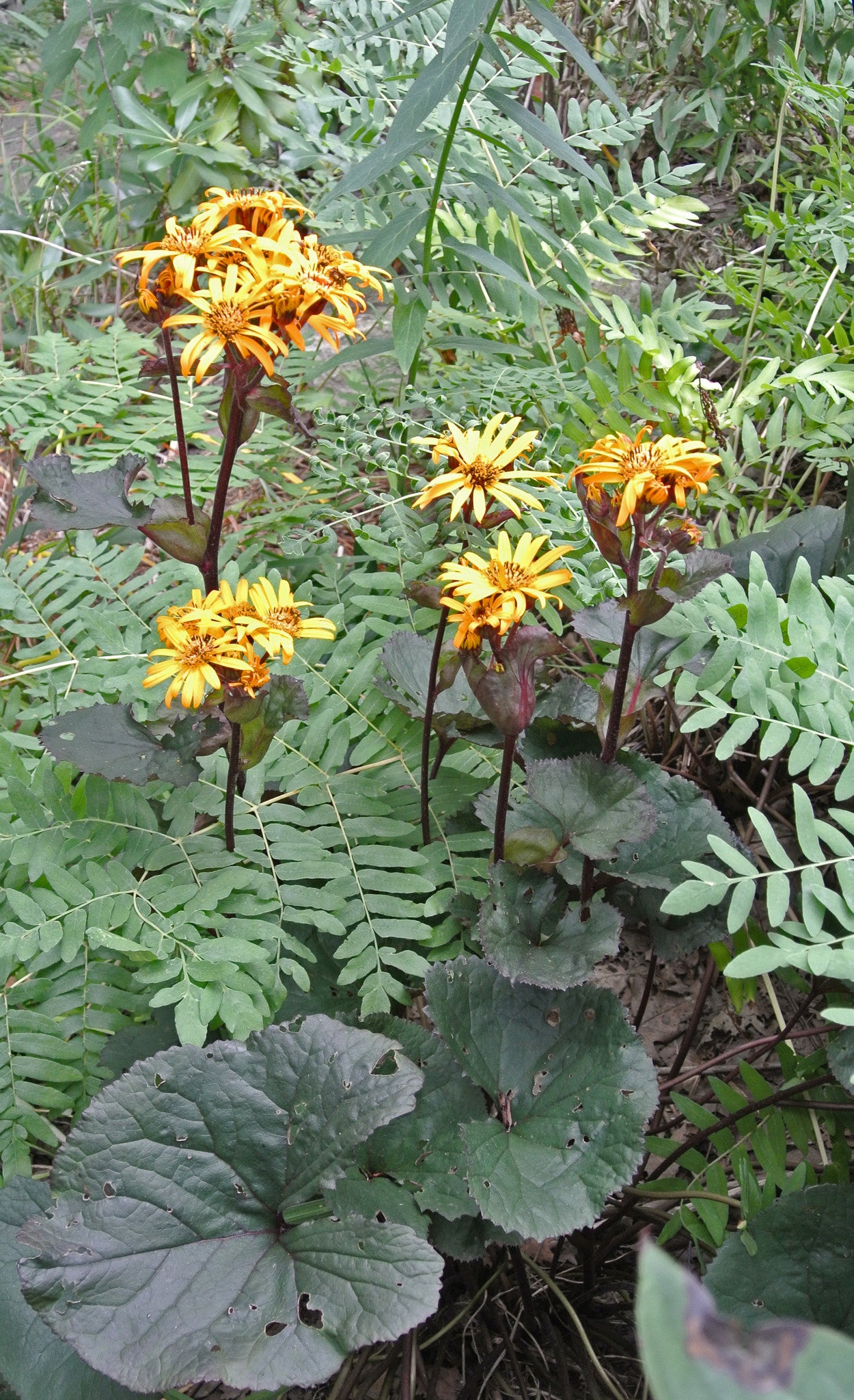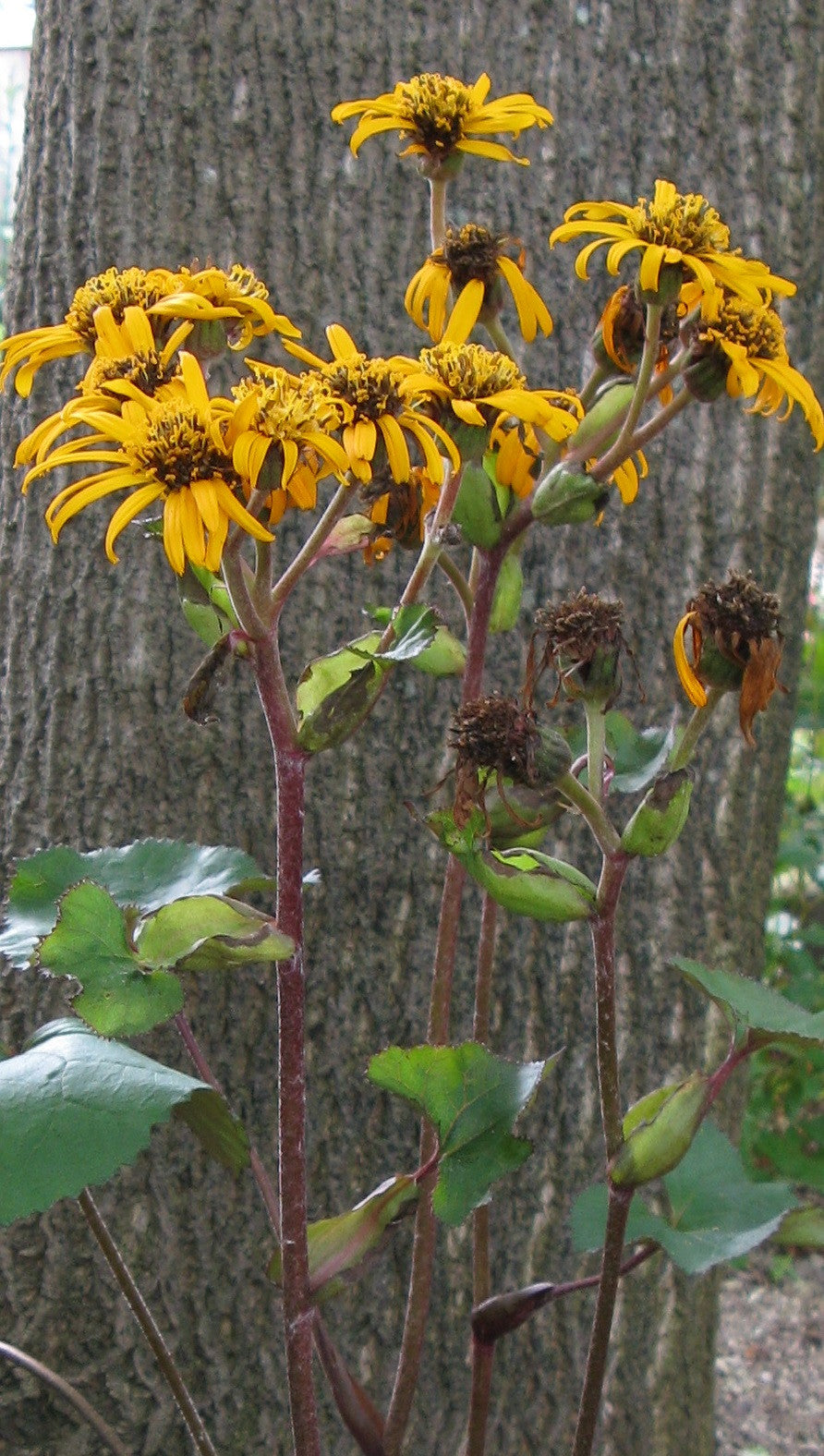Ligularia 'Britt Marie Crawford'
Approx. 0.5 litre pot
About this cultivar:
Ligularia 'Britt Marie Crawford' is the golden girl of Ligularia. It was first discovered by Britt-Marie Crawford growing in a plot of Ligularia dentata 'Othello' in Fife, Scotland. After her passing, her husband, James Crawford, took steps to honour his wife by naming the cultivar after her and introducing it to the world. The emerging leaves are a luscious, glossy, chocolate-maroon and, hands down, the darkest purple of the big-leaf Ligularia cultivars. The maroon eventually fades to green while retaining purple undersides and stems. Given more sunlight the leaves will hold their colour longer, perhaps though the summer if water is plentiful. The coarsely toothed, kidney-shaped leaves can be quite large—well over a foot across—but will be smaller in drier gardens. Midsummer brings the sultry combination of luridly brassy yellow blossoms on swarthy stems standing about a foot above the lush leaves.
- Position: Full sun, partial shade
- Soil: Almost any soil, wet soil, grows well in Ballyrobert
- Flowers: June, July, August
- Other features: Royal Horticultural Society Award of Garden Merit (RHS AGM)
- Hardiness: Fully hardy, grows well in Ballyrobert
- Habit: Clump forming
- Foliage: Deciduous
- Height: 60 - 90 cm (2 - 3 ft)
- Spread: 30 - 60 cm (1 - 2 ft)
- Time to full growth: 2 to 5 years
- Plant type: Herbaceous Perennial
- Colour: Green, yellow
- Goes well with: Hosta, Iris, Ferns
About this genus:
Ligularia (from the Latin for strap, referring to the shape of the ray floret) is an old world group in the daisy family that is used as both foliage and flowering plants in the garden. There is some confusion about Ligularia and Farfugium. These two genera used to be a single genus, Ligularia, but were split into the cold-loving Ligularia (roughly 140 species) and the warm-loving Farfugium (2 species).
The large leaves make great foils for the foliage of lacier plants while imbuing the garden with a bit of the exotic; you don’t have to rely on plants from the equatorial zone to get a dose of drama! They mostly have impressively lush foliage but are not just one-trick ponies, either; their exuberant flowers can be impressive, too. They usually flower in the autumn, producing clusters of butterfly-attracting, yellow composite blooms. Not all Ligularias, though, are created equal. A closer look reveals a variety of distinctive leaf shapes; striking floral variations; and plants that are large, tall, and small—and some that never really live up to any of this potential. It feels like we've tried them all here in our garden.
Ligularia prefers moist soil as found in its native habitat along stream banks and other bodies of water. We grow our Ligularia in partial shade, we also grow some in full sun where the soil is sufficiently moist. You can try in in almost full shade areas I'm told. Ligularia pairs well with Hosta, Iris, and ferns . Depending on the species, Ligularia can be used as a backdrop to smaller plants or as a specimen plant.






